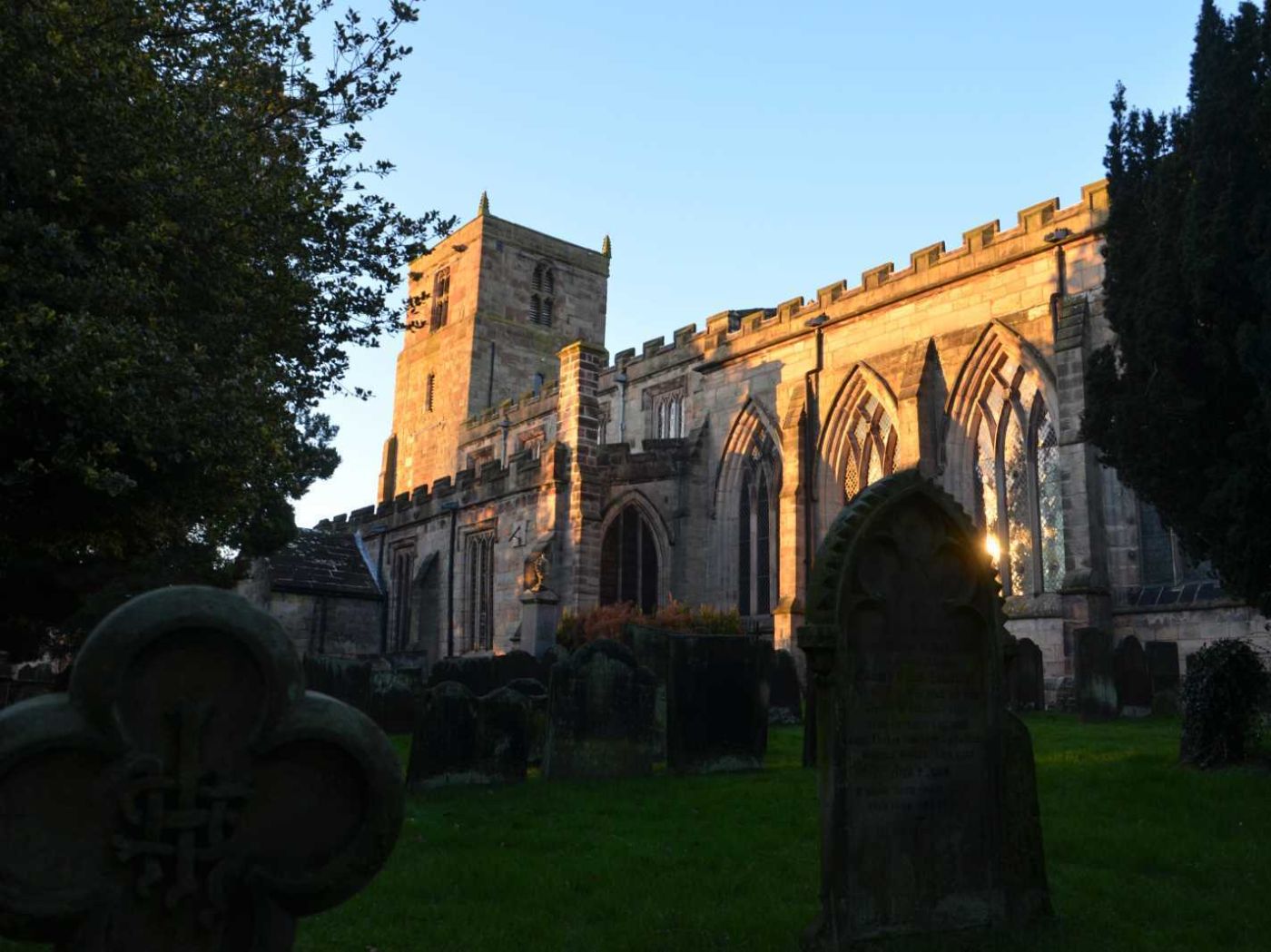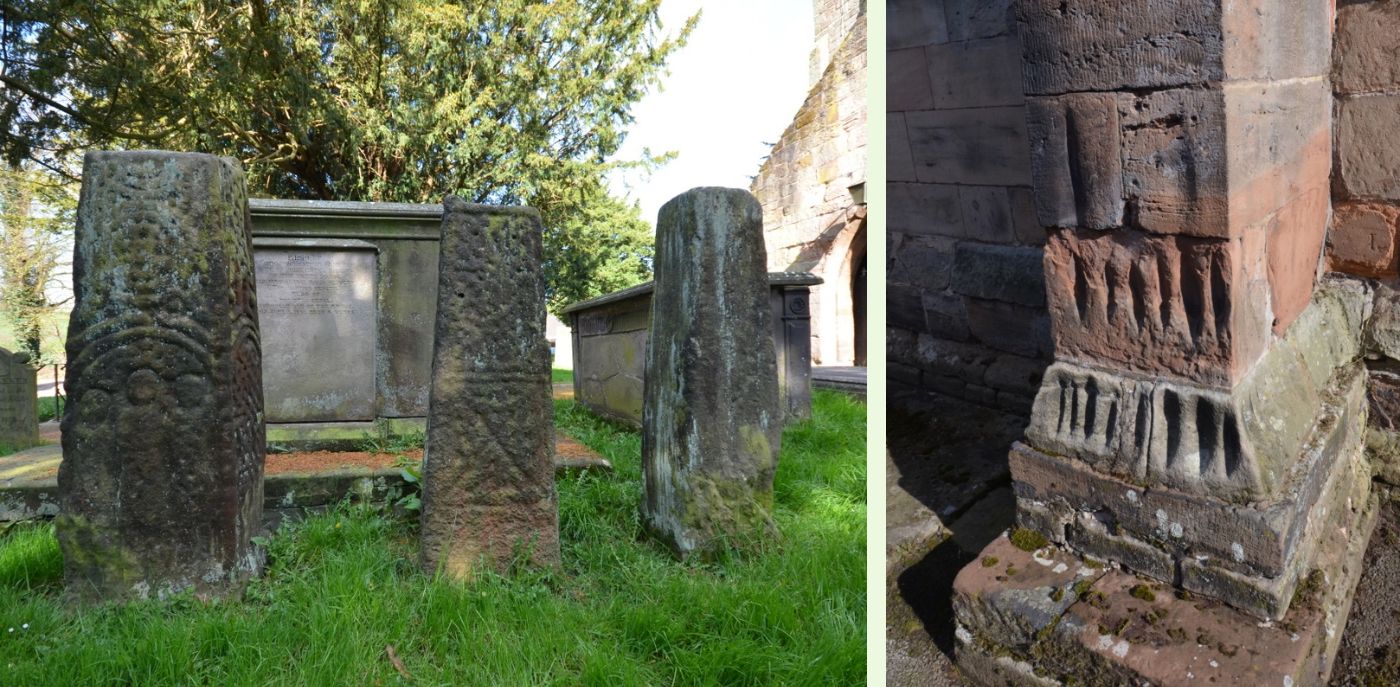It is likely that there had been a centre of worship here in Saxon times which remained up to the building of the Norman church and there is evidence to suggest that the priests who served it came from Stone Priory.
In 1196, the year the Norman church was consecrated.
The tower of the present building dates from the twelfth century. The interior of the Church also contains Norman pillars on the south side. The small Norman chancel was replaced in 1320 by the larger one, remarkable for the stained glass of its early fourteenth century east window and the sixteenth century carved stalls. Other features of interest are the thousand year old font, the Foljambe tomb, an effigy of a medieval knight and the seventeenth century roundels in the south window of the chancel.
In the churchyard near the thirteenth century south porch are the remains of Saxon crosses, thought to be preaching crosses (see below). On the wall to the right of the porch is a good example of a “Mass Dial”. This was provided in order to tell the time for the purpose of Mass worship.

